The expanding welcome mat for space industry collaboration
For some space industry companies — especially smaller start-ups — navigating the intricacies of a military government contract might seem as daunting as navigating the vastness of space itself. However, the U.S. Space Force’s (USSF) Space Systems Command (SSC) now has a one-stop shop for connecting these companies to a multitude of SSC programs: the SSC Front Door.

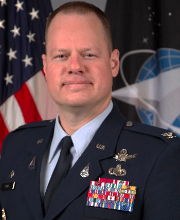
Colonel Joseph Roth
“We’re trying to make it simpler for companies – especially the smaller, non-traditional companies – to navigate the labyrinth of U.S. Department of Defense acquisition process; to work with the U.S. Space Force and SSC; to reduce the barriers of entry, help educate companies; and really go after the innovation in the commercial market to ensure that we stay ahead of the threat,” said Colonel Joseph J. Roth, who is heading up the Front Door initiative.
Roth also is director and senior materiel leader of the Innovation and Prototyping Delta portfolio as well as the commander of Space Systems Command, Detachment 1.
Through the Front Door, companies can be connected with SSC’s Commercial Services Office, International Affairs Office, Mission Manifest Office, Warfighting Integration Office, Space Enterprise Consortium (SpEC), the U.S. Department of Defense Space Test Program and SpaceWERX.
“It’s not an office that we’re building,” Roth said. “It’s really a network, where we connect all parts of SSC, and eventually, the U.S. Space Force, and also eventually, to U.S. Space Command, and across the U.S. Department of Defense, writ large. We want to make sure this succeeds as an enduring capability for the command and the U.S. Space Force.”
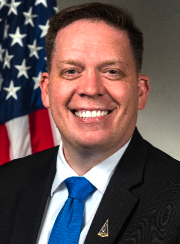
Jeremy Leader
“The Front door is ideally the main portal to helping companies across the space enterprise spectrum with navigating SSC,” said Jeremy Leader, director, SSC’s Commercial Services Office (SSC/CM.) “The whole point is to help industry – especially companies that are nontraditional suppliers, who haven’t worked with us before.
“We don’t want people to have to shuffle around to a bunch of different entities in order to do business with the government,” Leader said.
Launched in April of 2022, the Front Door has received some criticism for slow response times — the current response time goal for an email address on the portal is within one week — but Roth said the decision to launch the site and make continuous improvements and new additions was a conscious one, rooted in modern software design and the importance of user feedback — both from industry as well as internally at SSC — before each new iteration.
A new iteration of the website will debut later in September and there is a year-long plan to further develop the website and make it better and more interactive, he said. A training program for SSC guides to further help industry officials make the right connections also is in the works, as is a customer relations management platform, so companies won’t have to make the same presentation over and over again to multiple SSC officials.
“We want to make sure we have the processes and procedures in place to protect companies’ valuable, proprietary information,” Roth said. “We want to be very thoughtful and methodical. This Front Door can’t be just one-way. It has to open up and allow industry in, but we also, as a command, have to put information on the Front Door that is helpful to industry, like our requirements, our tech needs, our gaps and road maps so they have a good understanding of where the U.S. Space Force is headed and how we’re trying to get there with our acquisition programs and what role commercial industry has to play in it.”
Roth said an important component of the Front Door is the assessment portion: how SSC evaluates the proposals from a technical feasibility standpoint; examines how strong are the company’s financials are; determines whether there any potential supply chain issues; and whether foreign intelligence services may have penetrated the company.
“Those assessments on those companies will help the decision-makers in the U.S. Space Force make good decisions on who we contract with,” Roth said.
Strong interest from industry also made it imperative to launch the website sooner rather than later: companies have been flocking to the website since it was first introduced this spring — on average, the site gets 25 to 50 emails a day. Plus, it’s not just space industry companies, Roth said: other government agencies, other military branches and people from academia are also using the portal.
“We get a lot of requests from industry, and sometimes it’s from a company that’s developing something that’s not something that we’re developing in our portfolio, and (if we had had Front Door earlier) we could have made it easier and connected them to the right person sooner, without wasting their time,” Roth said.
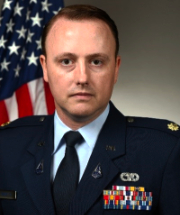
Major Adam
Burnetta
“Navigating an enterprise as vast as SSC and, by extension, the U.S. Space Force can be daunting, especially for companies that have never worked for the military or government before,” said Major Adam Burnetta, SSC program manager for Space Enterprise Consortium (SpEC), one of the components under the Front Door umbrella. “Where do you go if you have a new prototype that needs funding to further develop? What if you have developed technology that you think the military could use in a different way? What if you have questions about the technical roadmap of a certain mission area?”
The Front Door’s email in-box is designed to help vector companies in the right direction, and connect them with the appropriate programs and officials, Burnetta said. Large companies are more likely to be aware of the direction the USSF is exploring in terms of technical requirements because they frequently hire former members of the military. On the other hand, some smaller companies may be developing a particular technology that would be useful and of interest to the USSF, but unaware of how to get in touch with the right officials.
For example, SpEC mainly works with companies — often start-ups or other nontraditional entities such as small businesses, research centers and academia - who are working on prototype technologies, to help them mature. With a membership of more than 600 companies, SpEC has awarded almost $3 billion across 101 prototype projects in its first five years, Burnetta said.
SpaceWERX, the Space component of the U.S. Air Force’s AFWERX, discovers emerging technologies and capabilities from the private sector, determines a fit to USSF mission need, and adopts or adapts the capabilities using the Department of the Air Force’s Small Business Innovative Research (SBIR) and Small Business Technology Transfer (STTR) programs, said Gabe Mounce, deputy director, SpaceWERX.
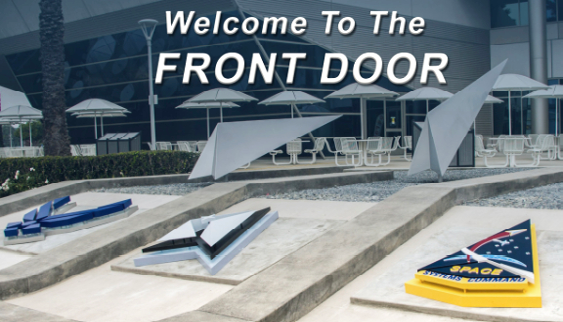
Having just turned a year old, SpaceWERX is on track to award close to 390 awards valued at $260 million to more than 260 small companies which has stimulated additional private sector and venture investment at close to $1B helping to bolster the industrial base.
The Commercial Services Office, which has a briefing slide posted on the Front Door section of SSC’s website, focuses on leveraging commercial capabilities and dual-use technologies, in accordance with Lt. Gen. Michael Guetlein’s mantra of “Exploit what we have, buy what we can and build only what we must,” Leader said.
The Commercial Services Office has two sets of customers: SSC Program Executive Officers and Combatant Commanders, who are interested in acquisition speed; and space industry companies who want to either provide a commercial service or have capabilities they can provide to the government and are looking for “predictable opportunities,” Leader said.

“One of my jobs is ensuring that we have the contractual and financial infrastructure in place to go fast smartly in a way that includes creating the appropriate marketplaces for industry sell their services and data or whatever it is that that they have to offer,” Leader said. “I’m very focused on the ‘buy what we can,’ but it’s not just buying the capability: it’s being able to transition it into operations and then exploit what you have for the fight tonight.”
Front Door also is a way for commercial industry to keep up with SSC Burnetta said.
“Through Front Door’s website, people can find out what events SSC is hosting and also what events SSC officials will be attending,” Burnetta said. “What’s our footprint going to be at Small Sat Symposium? What events are coming up in Los Angeles or other SSC satellite locations that industry officials can attend? It’s going to be a onestop- shop to get information about coming SSC initiatives and events. One of Front Door’s objectives is focusing on the threat. When we interact with industry, we want to drive the innovation and their capability development into the vectors that the warfighter is giving us.”
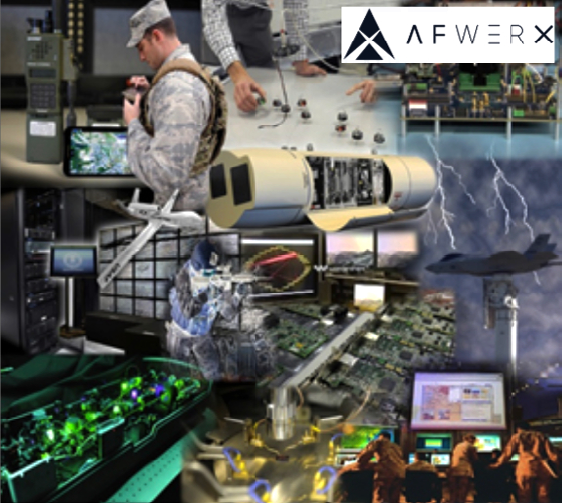
To assist with that, Front Door has been hosting monthly Industry and Reverse Industry Days to allow industry to meet with SSC officials to share information about what commercial space industry has to offer as well as capability areas the USSF is interested in acquiring.
From August 24-25, SSC’s Reverse Industry Days focused on Tactically Responsive Space, with more than 230 industry attendees from more than 160 companies meeting with senior U.S. Department of Defense officials, both through moderated panels and break-out meetings.
“Maybe a small company is working on a unique new technology related to propulsion or any other mission area, but isn’t sure what the Space Force is interested in developing,” Burnetta said. “With these industry days and reverse industry days, we can communicate where the threat is, where our priorities lie, and get a really good flow of information, both in terms of what services are out there and in helping to vector companies and their capability development toward the threat.
“You never know where those good ideas are going to come from,” Leader said. “Even if we’re not the ones that buy that great idea from the small business, these industry days are great, because it also allows industry to talk to each other. At the end of the day, just getting these ideas and the capabilities out there is a win for everybody.” The Industry Days and Reverse Industry Days also are an opportunity for the USSF to hear what the commercial space industry’s needs and priorities are, Burnetta noted.
“One example that I hear from space industry, is a desire to see the U.S. Space Force take the lead and push out guidance and policy related to space debris removal,” he said. “This is coming from companies who are working on solutions for the removal of space debris, as well as companies that are just worried about space debris and its congestion in Low Earth Orbit.”
“SSC has a lot of different doors, but we want to make sure that all of these doors lead to the same house,” Roth said. “That’s why we’ve created the Front Door. We want to make sure that when somebody knocks, there’s someone there to answer.” Contact Space Systems Command at SSC@spaceforce.mil follow on LinkedIn.


